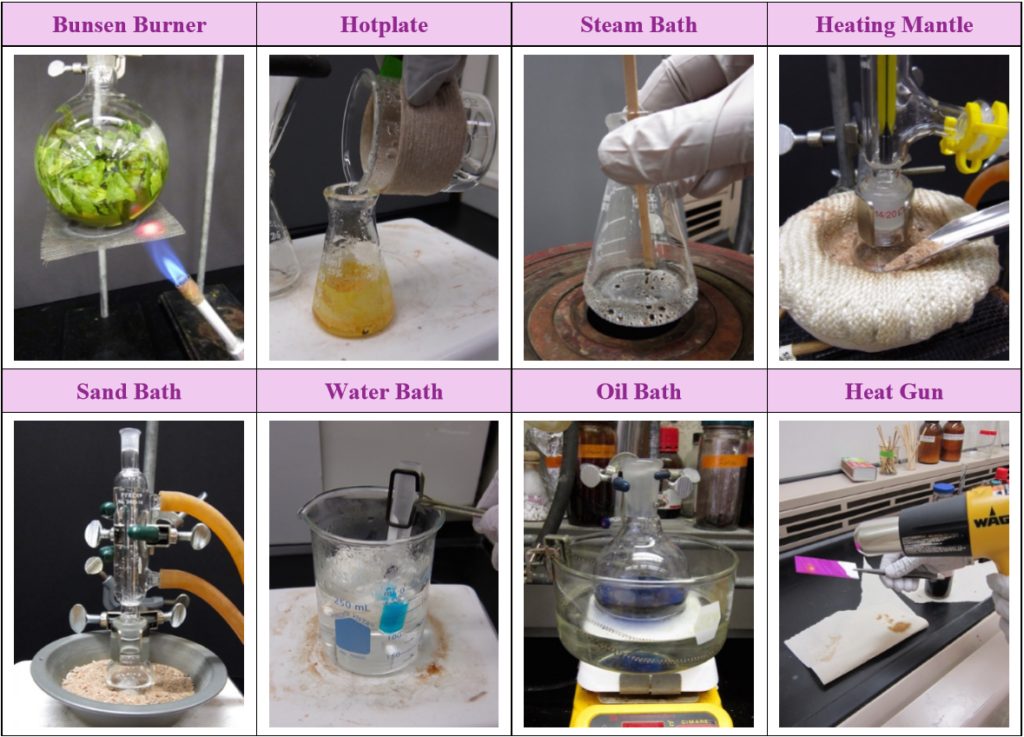Laboratory heating methods are essential for a variety of laboratory applications, particularly those involving liquids. Heating liquids can be done in several ways, depending on the desired temperature and desired result. Common laboratory heating methods include direct heating, indirect heating, and steam heating.
Direct heating
Direct heating involves applying heat directly to the liquid, typically with a heating element or heating plate. This method is often used for small volumes of liquid, as the heat is concentrated in one area. It is important to note that the liquid should not be heated past its boiling point, as this can be dangerous.
Indirect heating
Indirect heating involves heating the liquid indirectly, typically with a heated bath. This method is often used for larger volumes of liquid, as the heat is more evenly distributed. Heating baths are often used to heat liquids to a specific temperature, and then keep them at that temperature.
Steam heating
Steam heating is a less common laboratory heating method, and is typically used for larger volumes of liquid. In this method, steam is passed through a coil which is submerged in the liquid, heating it. This method is usually used for liquids which are not flammable, as steam can be a fire hazard.

Safety is an integral part of choosing a laboratory, and it is important to take into account the combustibility of the liquid being heated. Most organic liquids are combustible, with the exception of halogenated solvents. However, this does not mean that they will ignite when exposed to a heat source. A liquid’s flash point indicates the temperature at which its vapors can be set aflame with an ignition source, like a spark, match, or flame. For example, 70% ethanol has a flash point of 16.6°C, meaning it can catch fire at room temperature with a match. Bunsen burners can reach temperatures of around 1500°C, making them a serious fire hazard and a heat source to be avoided when dealing with organic liquids.
How to choose a heat source:
• Depending on the circumstances, the decision of which heat source to employ may be of utmost importance or any could work just as well. When making a decision, multiple aspects should be taken into consideration, such as:
• Accessibility (does your organization possess the apparatus?)
• Heating speed (is a gradual or quick heating process needed?)
• Heating adjustability (does the heat need to be moved around the equipment?)
• Desired temperature (a different approach is necessary when dealing with low boiling liquids as opposed to high boiling liquids)
• Combustibility of the material
An additional significant attribute when talking about combustibility is a liquid’s self-ignition temperature: the temperature where the material combusts without any kind of spark or external source of ignition and at normal pressure. This characteristic is particularly meaningful as it does not necessitate a flame (which is frequently prevented in the organic lab), but only a warm area. A hotplate surface turned up to “high” can reach temperatures up to 350oC. Safety caution: as diethyl ether, pentane, hexane, and low-boiling petroleum ether have self-ignition temperatures beneath this value (Fig.2), it would be hazardous to boil these solvents on a hotplate as fumes may escape from the container and combust when they make contact with the surface of the hotplate.
Generally, care should be used when utilizing a hotplate for heating any volatile, flammable liquid in an open vessel as it is conceivable that vapors can overrun the hotplate’s ceramic covering and touch the heating element underneath, which may be hotter than 350oC. For this reason, hotplates are not the optimal choice when heating open vessels of volatile organic liquids, although in some cases they may be used cautiously when set to “low” and used in a well-ventilated fume hood.

Since combustion is a reaction in the gaseous state, liquids with low boiling points (< 40oC) are likely to have low flash points and autoignition temperatures because of their considerable vapor pressures. All low boiling liquids should be handled with greater care than liquids with moderate boiling points (> 60oC)
Conclusion
During a working with flammable liquids in a laboratory, it is important to take extra precautions. These precautions should include ensuring that the laboratory is well ventilated, using non-flammable materials, and using the appropriate heating method for the liquid. In general, open flames should be avoided when working with flammable liquids, and all heating methods should be used with caution. Additionally, it is important to ensure that the temperature of the liquid does not exceed the boiling point, as this can lead to a dangerous situation.
